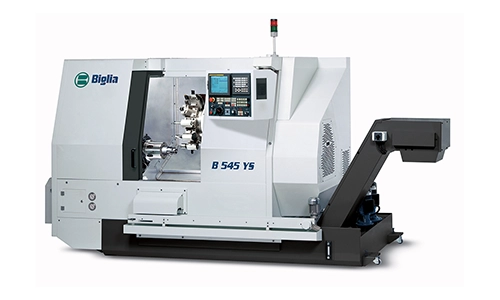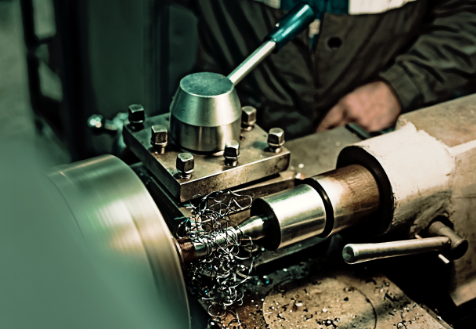The metalworking industry is a fundamental component of the manufacturing sector, heavily focused on the production of machinery, equipment, and other components made of metallic materials. This sector is vast and diversified, encompassing a large number of activities ranging from the manufacture of tools and components for the automotive industry, for example, to the production of specific machinery used in sectors such as construction and energy. In short, it is a diverse world that represents a significant portion of the gross domestic product of our beautiful country and is also a flagship of Italian manufacturing.
Alca Srl: Forty Years in the Field
In 1982, Alberto Cavalli founded a small individual artisan company in Trezzano Rosa: Alca Snc. With the help of drills, lathes, and milling machines, Alberto worked on metallic materials primarily on behalf of third parties. Not even ten years passed before the company relocated to the Lombard territory, focusing on Pozzo d’Adda. By 1990, Alca began an innovative and modernization process crucial for the company’s development, also thanks to the involvement of Alberto’s children: Anna and Andrea.
Through the hiring of new personnel and the adoption of modern and effective machinery, especially CNC lathes and machining centers (computer numerical control), Alca developed into a highly competitive company.
The process of innovation and growth continued relentlessly throughout the nineties and the 2000s, to the extent that in August 2008, the company relocated to Pozzo d’Adda in the new facility at 28 Via del Lavoro. Now, this company has managed to expand and acquire market shares internationally, working for the cartonboard, electromechanical, food, electric pump sectors, and much more.
Various types of machining, always in the name of precision
When it comes to the metalworking sector, turning and milling represent that part of precision mechanical machining that is indispensable.
Turning is the process of mechanical machining that involves giving a new shape to a raw piece of metallic material (although it can also be applied to other materials, such as wood and plastics) thanks to the effect of the rotation of a cutting tool on the workpiece.
The lathe is the machine used in these operations and is composed of various parts that together perform the final work.
Milling, on the other hand, is a widely used mechanical machining process for the production of components and parts. This type of machining can also be applied to various types of materials. In this process, a cutting tool called a mill is used to remove material from a raw piece, creating frames and grooves of various kinds.
This operation can be performed with manual milling machines but especially on CNC milling machines with numerical control. These more innovative machines can be programmed to work in series on different pieces. During the milling process, the mill rotates at high speed while the workpiece is securely fixed to the milling machine table. The movements of the mill and the workpiece can be controlled on multiple axes, allowing for a wide variety of different machining operations.
The importance of assembly in precision mechanics cannot be overlooked: this is a crucial phase in the industrial production process, bringing together, uniting, the various metallic components to create a final product. This process requires precise organization and skills to ensure that the components are correctly assembled to meet the required quality and safety standards. There are various techniques and methodologies for securing assembled components, such as bolting, riveting, screws, and nails.
The CNC parallel lathe: a precise and versatile tool
A CNC parallel lathe is a highly advanced machine tool designed to perform programmed turning operations automatically and precisely. Its main feature is computer numerical control, which allows programming of the operations that the machine will perform, unlike manual machines.
This type of lathe has a rotation axis that allows the workpiece to rotate around a central reference point. Depending on the machining that needs to be done, the lathe can have either a fixed or a movable head. The movable head is adjustable to work on pieces with complex shapes, while the fixed head remains stable in the initial position during machining operations.
The chuck is the part that holds the raw workpiece, with the ability to adjust the diameter and equipped with jaws to ensure a better grip. As for the cutting tools, they are mounted on supports with the possibility of being changed automatically thanks to a tool change system. The worktable, finally, is the component on which the workpiece is positioned and can rotate for uniform machining from every side.
These parallel lathes are also equipped with essential cooling systems to prevent excessive tool overheating and increase the durability of cutting tools. The control panel provides an interface for programming the machinery, monitoring the process, and making any necessary changes.
The control program manages all machine operations, allowing detailed programming and precise control of rotation speed, axis movement, and all other variables. Operator safety is ensured through emergency stop devices and adequate protections to prevent accidents. All in all, CNC parallel lathes have been designed and built to ensure high standards of precision, effectiveness, and efficiency in automated mechanical machining operations.
Alca Srl: A Guarantee of Precision
For more than four decades, this company has been serving its customers, guaranteeing quality and precision. The operations range from small batches to medium series, also involving the assembly of electrical components.





